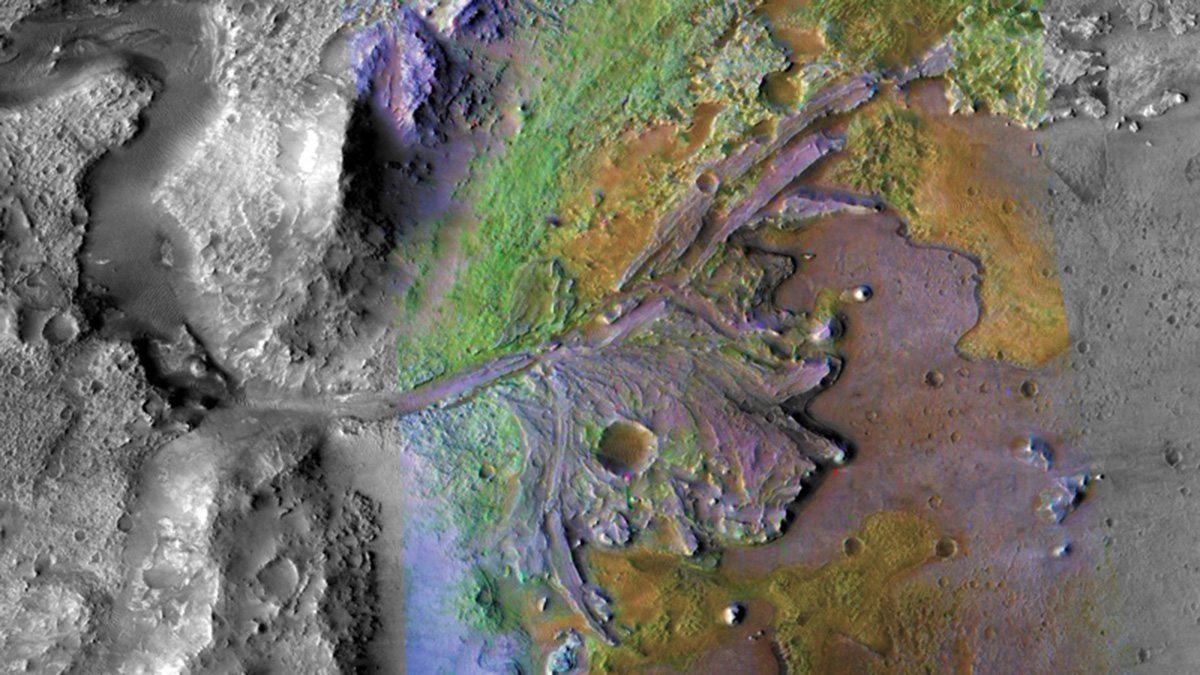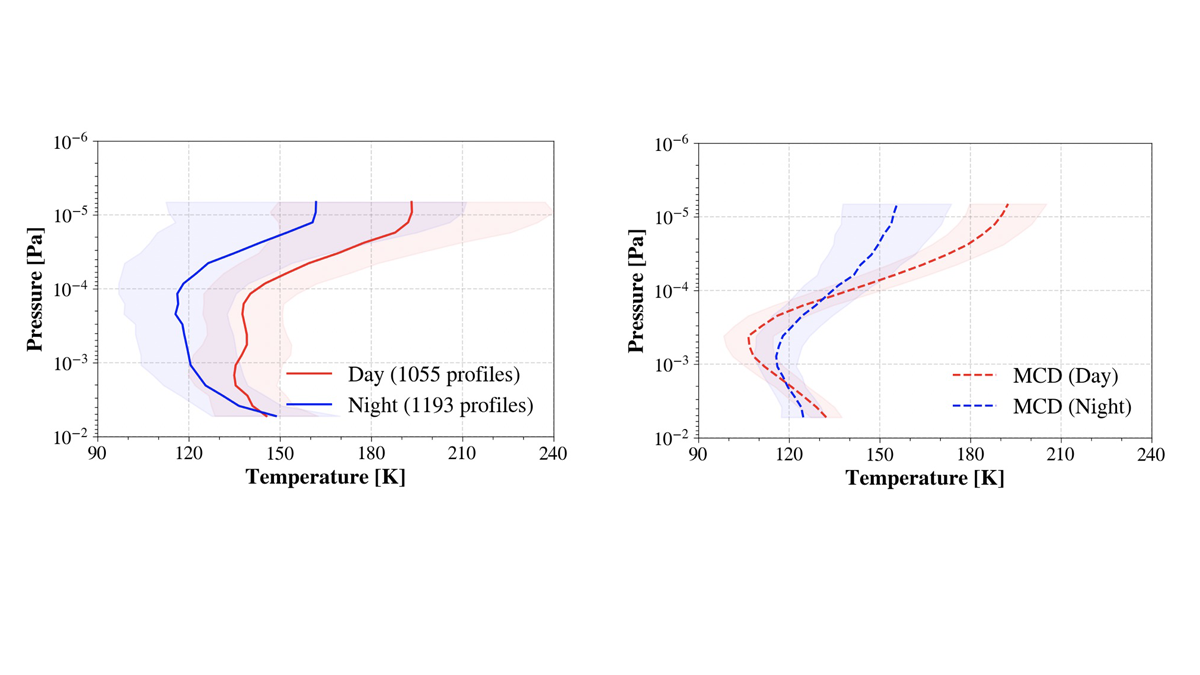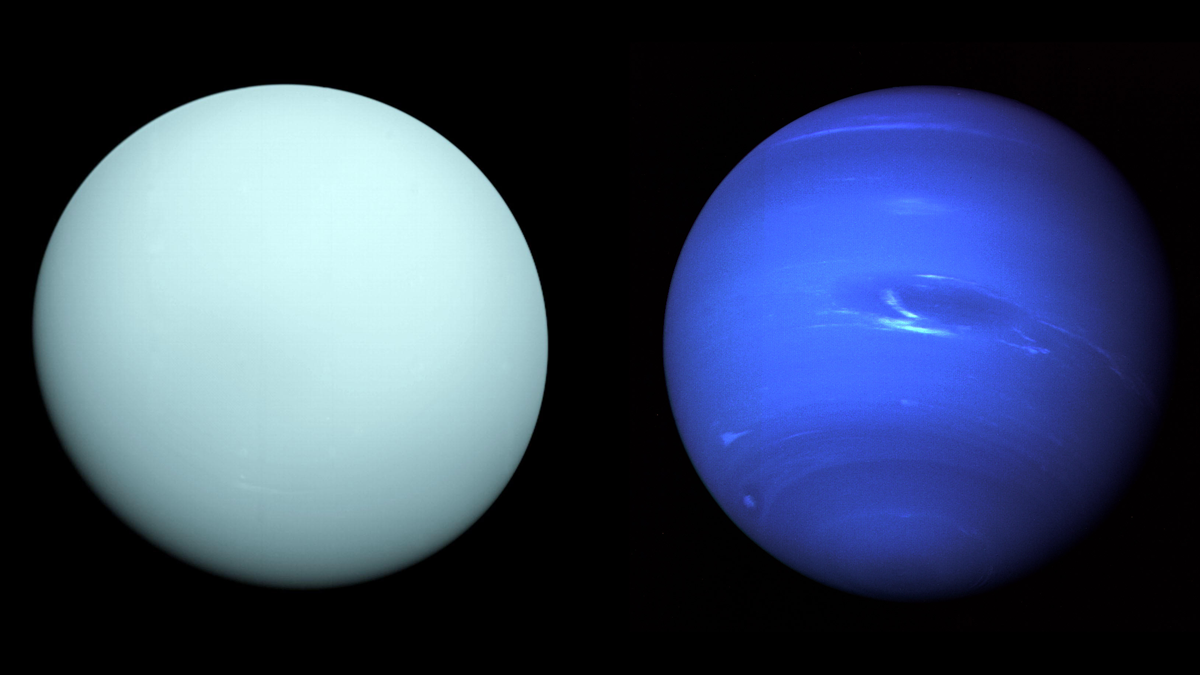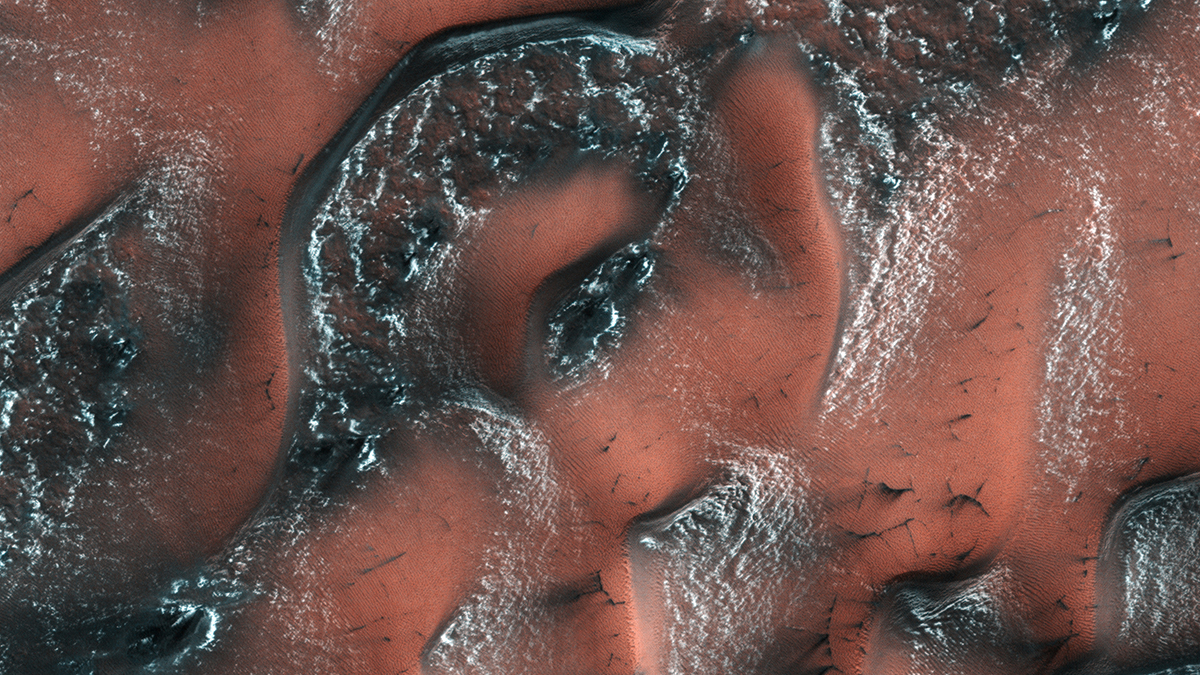Unprecedented images reveal how Saturn’s atmosphere is evolving as summertime winds down in its northern hemisphere.
planetary atmospheres
A Planet Is Dramatically Losing Its Atmosphere
Helium that was once part of the atmosphere of the extrasolar planet HAT-P-32b is being ripped away and forming two giant streamers of gas several million kilometers long.
The Nitty-Gritty Forces That Shape Planetary Surfaces
Scientists are coming up with ingenious ways to compare terrestrial sand dunes, dust storms, and rain with their counterparts on Mars and Titan.
Asteroid Impacts Could Have Warmed Ancient Mars
Hydrogen released during large impacts might have boosted Mars’s surface temperature above freezing for thousands or even millions of years, enabling liquid water to flow over the Red Planet.
Unprecedented Constraint on the Martian Mesopause Temperature
The middle atmosphere of Mars is a critical region influenced by both waves from below and solar radiation from above, but until now there have been very few observational constraints on this region.
Callisto’s H Corona: Offspring of the Surface or the Atmosphere?
The mostly unknown Callisto’s H corona is created by a global tenuous H2 atmosphere and not by surface water as previously believed, providing the first evidence for H2 in Callisto’s atmosphere.
Ozone, Water Vapor and Temperature: It’s a Complex Relation
Solar occultation observations from the ACS/MIR instrument provide coincident profiles of O3, H2O and temperature, shedding light on correlations and unveiling knowledge gaps in Mars’s photochemistry.
A Unified Atmospheric Model for Uranus and Neptune
In a new model, three substantial atmospheric layers appear consistent between the ice giants.
Diagnosing Neptune’s Chilly Summer
A pandemic project analyzing a trove of infrared images revealed an unexplained phenomenon taking place in Neptune’s atmosphere.
Mars’s Dust Cycle Controls Its Polar Vortex and Snowfall
On Earth, the water cycle is a dominant climate force. On Mars, it’s the dust.










